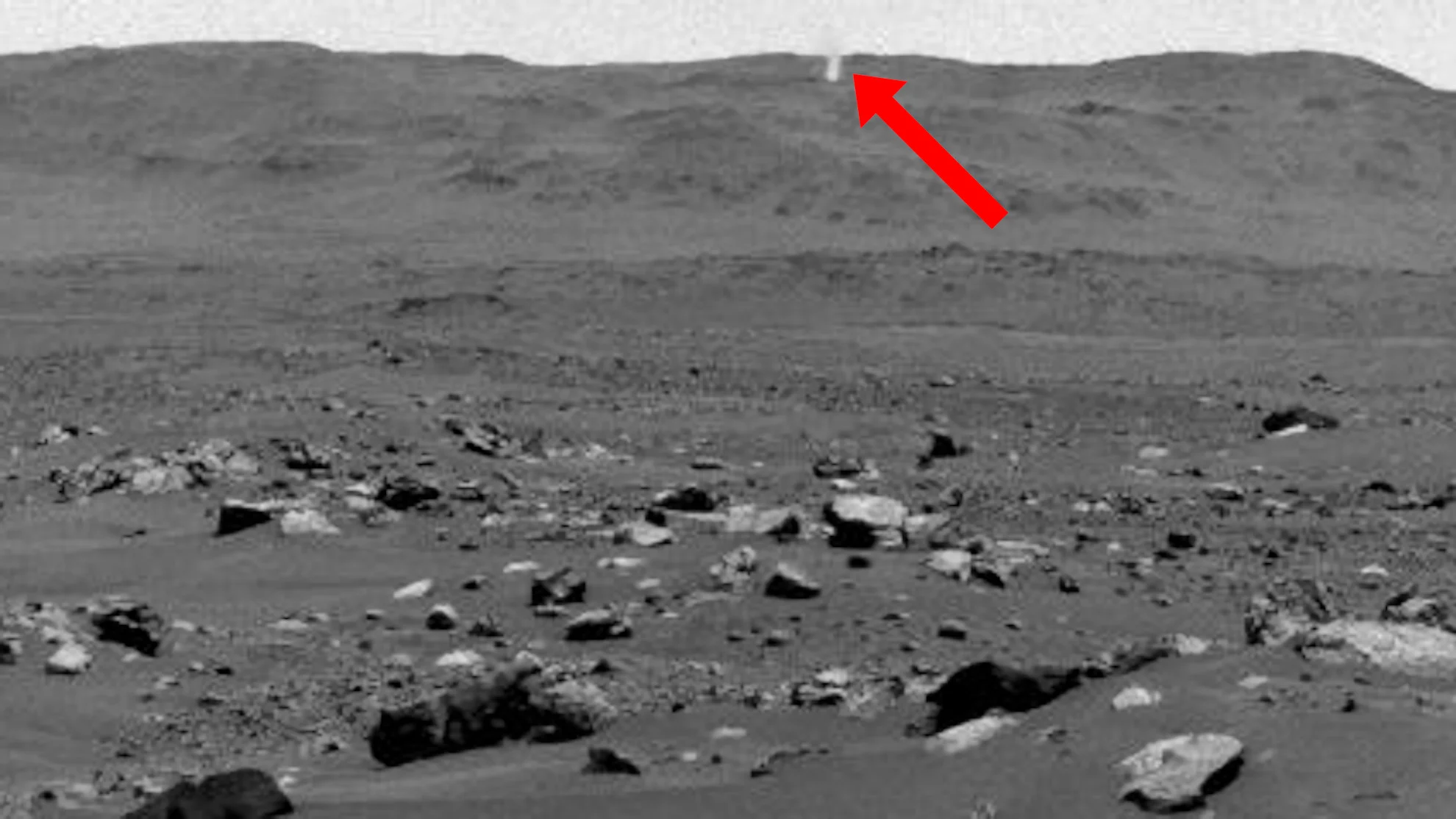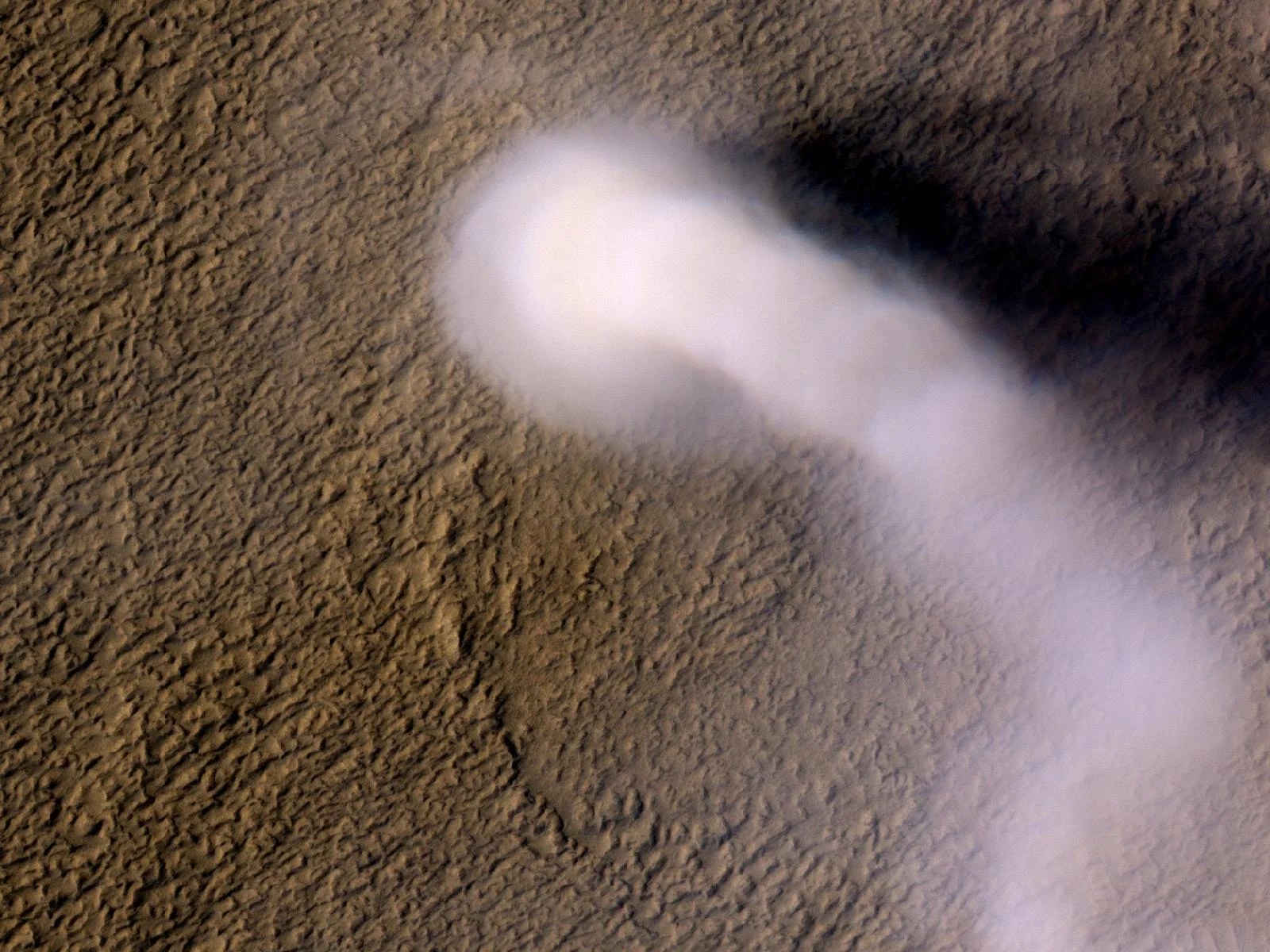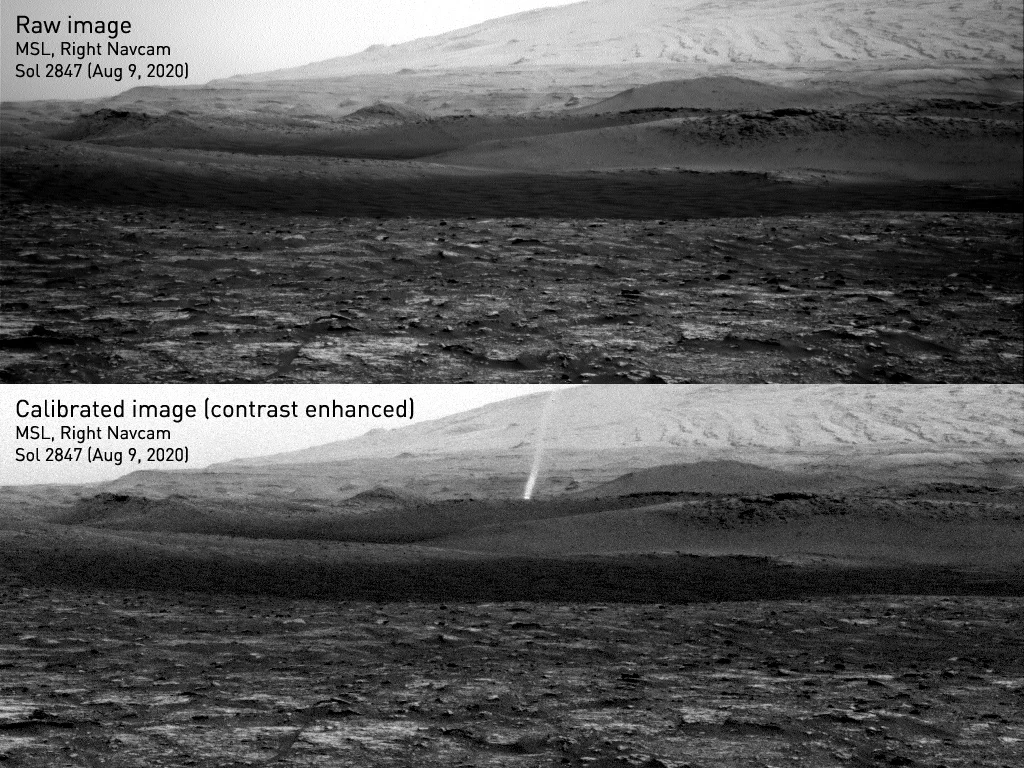
Perseverance spotted an immense 2 kilometre-high dust devil on Mars
Perseverance has taken over a half-million images so far, but how often do we get to see something in them move?
As NASA's Perseverance rover approached its 900th day on Mars, its cameras recorded something extra special: an immense dust devil, whirling across the landscape just a few kilometres away.
Perseverance has been exploring Jezero Crater since February of 2021, and has snapped well over 500,000 images of the local terrain so far.
On August 30, 2023, a sequence of pictures taken by the rover's front navigation cameras captured something remarkable.
Roughly 4 kilometres away, along a formation nicknamed Thorofare Ridge, a dust devil whirled through its field of view.

A large dust devil moves along an elevated ridge near the Perseverance rover. A red arrow points to the phenomenon, which may be challenging to spot in the black and white image from the rover's navigation camera. Credit: NASA/JPL-Caltech/Scott Sutherland
According to the mission team, based on its distance, they estimated the Martian twister was around 60 metres wide. Only the lowest 118 metres of the funnel is visible in the rover's images, they said.
"We don't see the top of the dust devil, but the shadow it throws gives us a good indication of its height," Mark Lemmon, a planetary scientist at the Space Science Institute in Boulder, and a member of the Perseverance science team, said in a NASA press release. "Most are vertical columns. If this dust devil were configured that way, its shadow would indicate it is about 1.2 miles (2 kilometers) in height."
Dust devils on Mars form in the same way they do here on Earth.
Intense heating of the surface by sunlight results in parcels of warm air rising very quickly through much cooler air. Air rushing in from the sides to replace that rising air causes the column of air to rotate. The size of the dust devil depends on how much warmer that rising air is than the cooler air above it, and how quickly that rising air cools to the temperature of the air surrounding it.
Here on Earth, dust devils can reach up to a few hundred metres in height.
Due to Mars' extremely thin atmosphere, temperatures drop off very quickly the farther you are from the ground. While air near the ground can reach over 20°C, the air just a metre or two above that can be freezing cold. In that kind of environment, dust devils form very quickly, and can climb to extreme heights.
This one was estimated at 2 kilometres tall. The tallest can apparently reach heights of up to 20 kilometres above the ground.

This gigantic Martian dust devil was spotted by the Mars Reconnaissance Orbiter on March 14, 2012. It was estimated at 140 metres wide and reached a height of 20 kilometres. Credit: NASA/JPL-Caltech/UArizona
Despite the extreme size of Martian dust devils, they could be thought of as 'gentle giants' because Mars has only 1 per cent of the atmosphere that Earth has. So, even if the largest dust devil on Mars passed over you, the winds swirling around it would have so little force behind them that you'd barely feel it.
What's even more remarkable about this is that Perseverance's cameras captured the dust devil purely by coincidence.
NASA says that while dust devils are most common during spring and summer on Mars, and it's currently summer where Perseverance and Curiosity are located, there is no way to accurately predict when dust devils will appear at any particular location.

The Curiosity rover caught this dust devil passing across the base of Mount Sharp, in Gale Crater, on August 9, 2020. The top image shows the raw view, in which the twister is barely visible. The bottom panel shows the enhanced view, which makes the dust devil far easier to see. Credit: NASA/JPL-Caltech/SSI
So, to capture them, the mission teams have to rely on luck. They command Perseverance and Curiosity to take multiple images with their navigation cameras around midday, with the hopes that at least one of these remarkable atmospheric vortices will pass through their field of view at just the right time.











